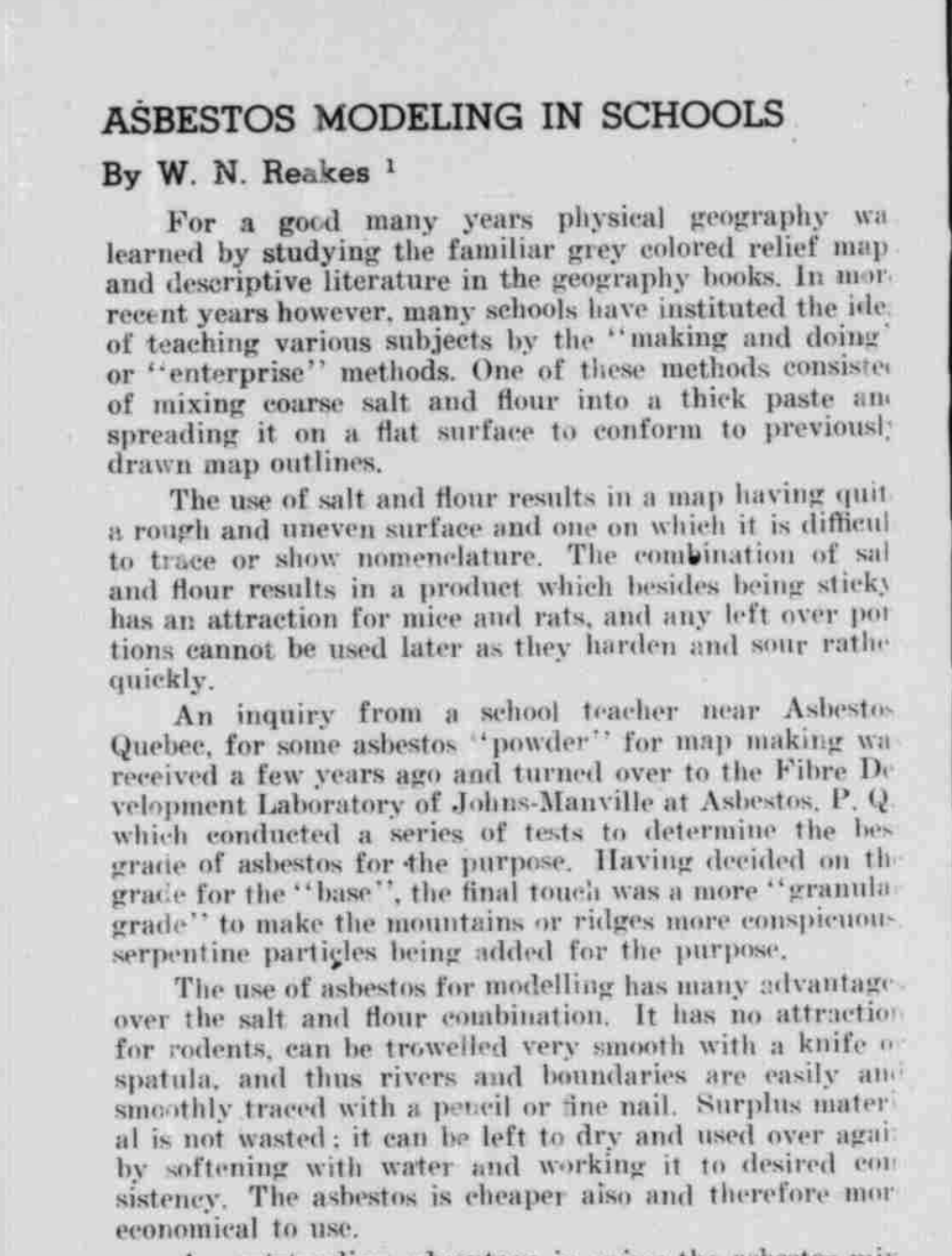Since the 1980s, asbestos use in America has been banned from being used in most construction applications, thanks to the Environmental Protection Agency’s (EPA) regulations. However, this ban has only stopped the ongoing use of asbestos in new construction. In many cases, asbestos can still be found in buildings constructed in or before the 1980s, including many schools. Because asbestos exposure can lead to various types of illnesses and cancers, parents need to know about this hazard and what to do about it.
How Asbestos in Schools Poses a Health Risk
An important category of asbestos exposure is called secondary or exposición de segunda mano. Once the truth about asbestos became public knowledge, the first attempt of the asbestos industry was to spin the narrative in a way that limited exposure risks to workers who dealt with asbestos first-hand. For example, as long as you didn’t work in the industry directly, you were safe from harm. However, this is entirely false. While those who installed asbestos-containing materials (ACMs) or worked nearby could carry a comparatively higher risk of long-term exposure symptoms, this is only one facet of the manifold dangers of asbestos.
The reason for this is due to airborne contamination of asbestos. When fibras de asbesto are exposed, either during manufacturing processes or after materials have deteriorated from water or fire damage, asbestos fibers break apart from materials such as insulation, gaskets, and cement. When this happens, the fibers can become airborne and spread to surrounding areas. Unfortunately, one of the primary ways asbestos fibers spread is by clinging to work clothes or tools.
Mesothelioma and Other Diseases in Unsuspecting Victims
Research has led to the conclusion that spouses and children of asbestos workers have gone on to contract mesothelioma or lung cancer, due to the unintentional contamination of their homes. Another term for this tragic occurrence is “take-home asbestos exposure”:
“Para-occupational refers to cases in which the afflicted individual was not exposed through work, but through a family member who brought asbestos fibers into the home from work, sometimes described as ‘take-home’ exposure.”
But in addition to take-home exposure concerns, asbestos can also spread similarly throughout a surrounding work area, both during and after construction. Examples of this include manufacturing facilities and shipyards where asbestos may have been restricted to a particular workstation or location in a facility. Things like HVAC, high winds, and clothing contamination easily contaminate areas that would otherwise be considered safe. Like unsuspecting spouses and children, people working in contaminated adjacent office buildings could easily contract the same illnesses as those working directly with asbestos, albeit unsuspectingly.
Exposure and Contamination
Because we know that asbestos exposure occurs in this way, this brings us to consider why schools still containing the relics of asbestos materials are potential hazards to the present day. According to estimates, almost fifty percent of American schools in operation today were built during the era when asbestos was still highly praised and regularly used in construction projects. Asbestos was used for its fire-resistant properties, as well as its ability to insulate walls and attic spaces. These products are not considered potentially dangerous, as long as they remain undamaged and undisturbed.
The problem is, that while asbestos is considered virtually indestructible, the materials treated with asbestos are not. Over time, they deteriorate and break apart, which exposes the microscopic fibers and allows them to spread freely. As long as old asbestos materials remain, they are subject to deterioration, even at a snail’s pace.
However, there are things that can quickly accelerate deterioration and subsequent exposure, such as natural disasters. In addition to structural concerns, school buildings that suffer from instances of fire damage, tornado damage, wind damage, or flood damage have an additional safety challenge to solve, especially if the school contains asbestos materials. Forces of nature can quickly make undisturbed asbestos a huge contamination risk.
Common Asbestos Materials in School
Those who are concerned with what has been said already are probably wondering, where can asbestos be found in schools and what are some specific areas of concern. While asbestos was used in hundreds of household and construction products at one time, there are a few notorious places to expect asbestos in older buildings, including schools. These include:
- Pisos de vinilo
- Ceiling Tiles
- Cement Sheets
- Gutters
- Techumbre
- Heating and Cooling ductwork
- Boiler and Pipe lagging
Just from the selective list above, it’s clear that asbestos was not simply used in attic spaces, isolated from the “living space” of classrooms and hallways. Instead, asbestos materials could be above, below, and even on certain classroom surfaces. Far from a hypothetical or theoretical risk, this up close and personal situation of asbestos in school has already proven to be a real threat. Teachers from Julia R. Masterman Laboratory and Demonstration School protested their concerns of being subjected to asbestos in this Philadelphia School District location.
They protested what they deemed to be a lack of concern or provision from the Philadelphia School District. The situation got worse after the district considered their protest of setting up classrooms outside during teacher prep days as unexcused absences and docking the teacher’s pay. The teachers argued in court that the district had failed to handle the situation safely, choosing to penalize the teachers for demonstrating their concerns for their health and their students.
A Historical Precedent
It’s easy to get into the politics of such concerning matters and lose sight of the big picture. However, there are sobering lessons in recent history that seem to defend the concerns of these teachers. For example, one notable case of a teacher who died from mesothelioma resulted in a win for her family in court. Hazel Healey, who worked as a teacher from 1971 to 1980 died last year from mesothelioma. Her family received a settlement, due in part to documentation revealing that St. Gabriel’s school (where she taught) contained lethal amounts of asbestos. It should be noted that the school removed significant amounts of asbestos in the years following Healey’s teaching career, but for her, the damage proved to be lethal.
Asbestos was even used in schools as an arts and crafts material.
In the May 1950 issue of Asbestos Magazine, an article describes how students used asbestos powder to make Asian cultural plaster masks as a school craft. Plaster has been known to contain asbestos, but in this case the teachers specifically sought out asbestos for the craft.




Most of these uses of asbestos have been banned in the U.S., but some asbestos-tainted crafting materials como el clay and can still be found in the US (or escape import restrictions), so you should be cautious with materials that are old or imported from overseas.
Latency Concerns for Teachers and Students
Anyone who swallows or inhales airborne asbestos fibers will not know it- and for several reasons. First, asbestos fibers are microscopic, meaning that for all intents and purposes, they are invisible to the naked eye. Secondly, asbestos has no smell or taste, so exposure happens unsuspectingly. Finally, asbestos exposure is often a long game.
When asbestos fibers enter into the human body, they lie dormant for many years, often as much as fifty years before symptoms occur. This is known as the latency of asbestos exposure, and it explains how Healey and others develop terminal cancers like mesothelioma decades after the fact.
This point also applies to children, however. Children in schools that contain asbestos may go on to live their lives normally for a number of decades before symptoms start to occur. Consider these points made by the National Cancer Institute:
- “Although it is clear that the health risks from asbestos exposure increase with heavier exposure and longer exposure time, investigators have found asbestos-related diseases in individuals with only brief exposures.”
- Generalmente, quienes desarrollan enfermedades relacionadas con el asbesto no muestran signos de enfermedad durante mucho tiempo después de la exposición ".
Asbestos Removal as a Costly and Complicated Situation
The problem in schools seeking to combat asbestos exposure concerns is manifold. While the Asbestos Hazard Emergency Response Act (AHERA) requires all public and private schools to train designated persons, maintain an asbestos management plan, conduct yearly inspections, and provide teachers and parents with annual updates, it is unlikely that these protocols are being followed adequately.
What’s more, the sheer cost of asbestos abatement can be astronomical, according to the scope of work involved. Schools will not want to voluntarily release information about asbestos dangers in buildings, especially if it can be used against them in future litigation. This puts schools in a bad place and it puts teachers, children, and parents at risk. Due in part to these manifold complications, AHERA rarely enforces asbestos removal in schools. Despite this, parents need to stay proactive and ensure that schools are providing this mandated information.
Compensation is Available for Asbestos Treatment
For many people, being diagnosed with an asbestos-related disease prompts stress and anxiety, particularly because of the high cost of most medical treatment options. Thankfully, there are a range of financial compensation options available The good news is, that taking action in response to asbestos exposure does not mean that you must muster the courage and endurance to fight a courtroom battle.
You should know that one way to receive financial compensation for asbestos exposure avoids the need to file a lawsuit entirely. This option is known as an asbestos trust claim and it is often the fastest and easiest way to receive compensation. If you or someone you know has been exposed to asbestos or diagnosed with an asbestos-related disease such as mesothelioma, reach out to our professionals who can help you take the important steps right away, entirely risk-free.



